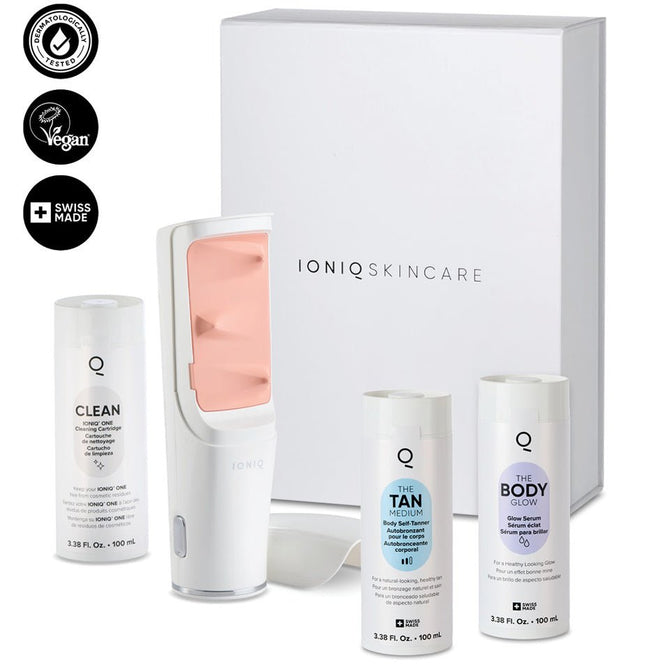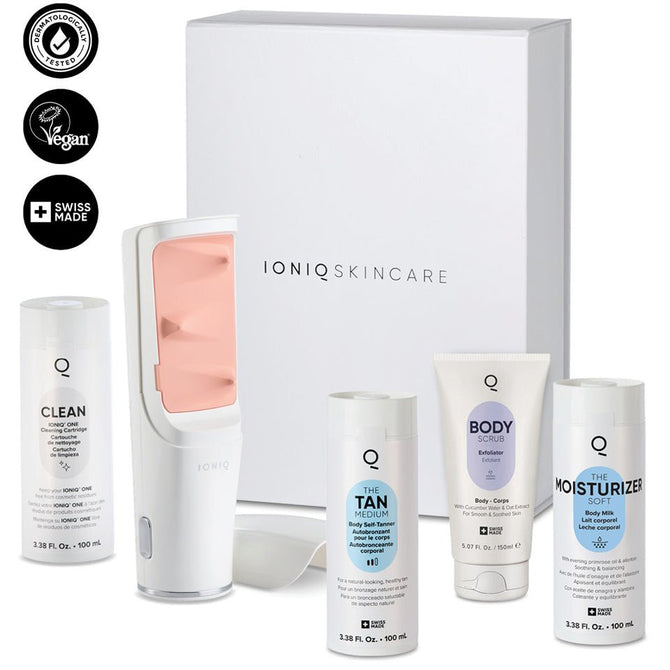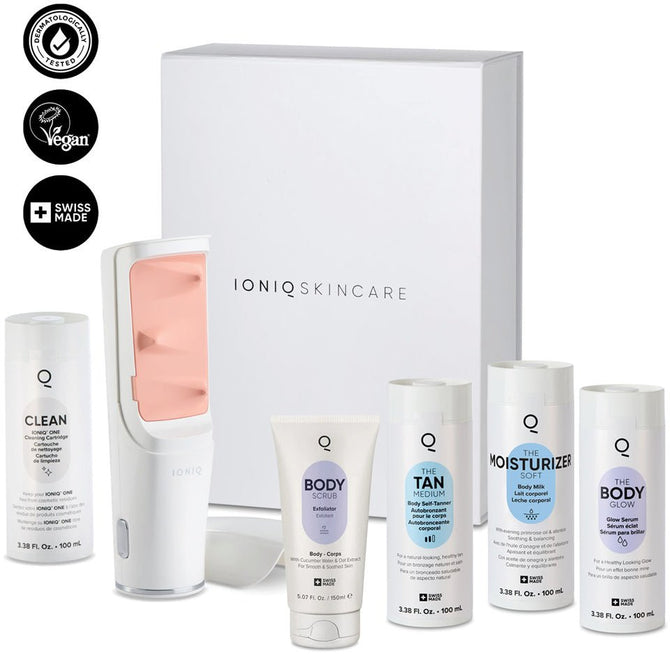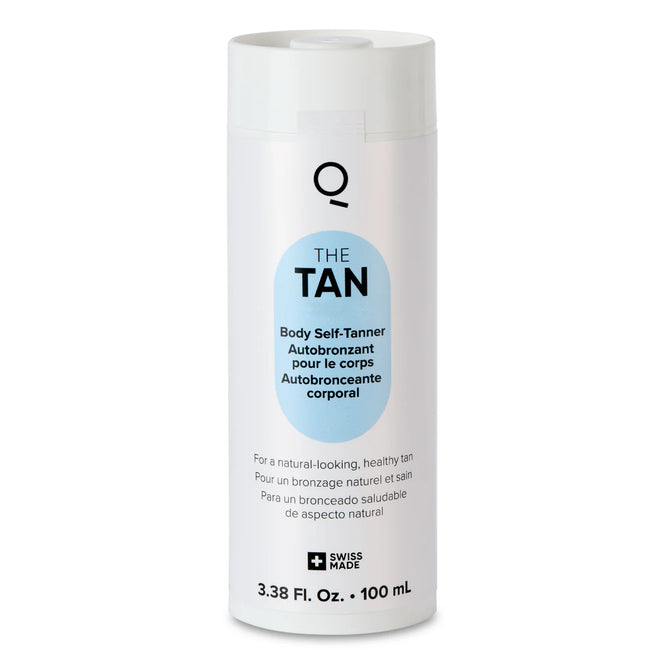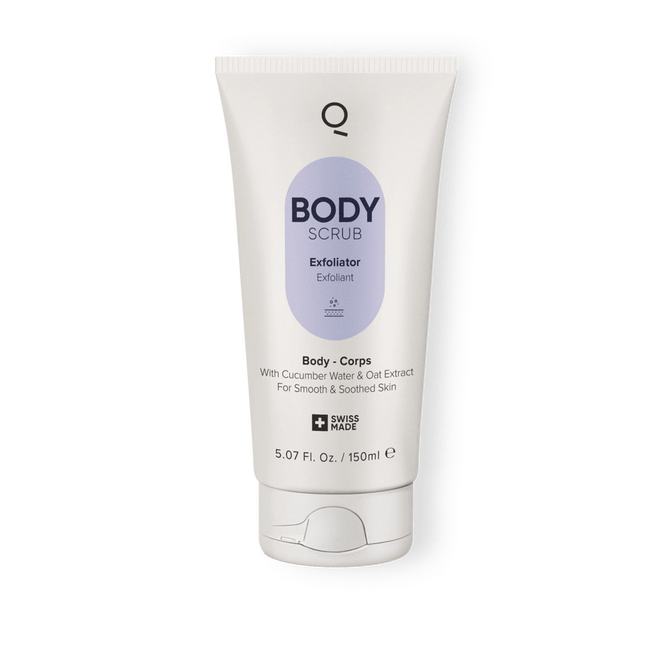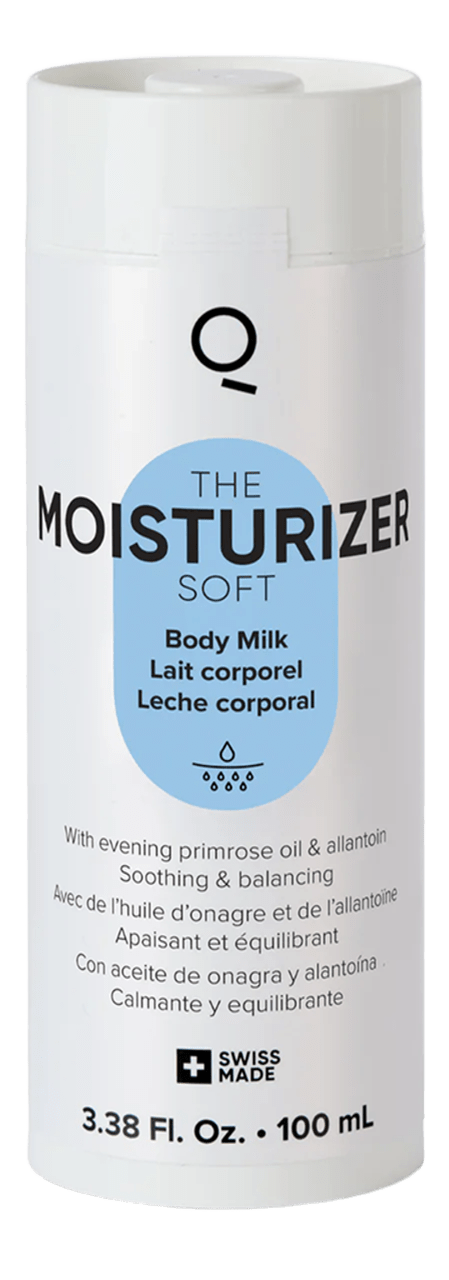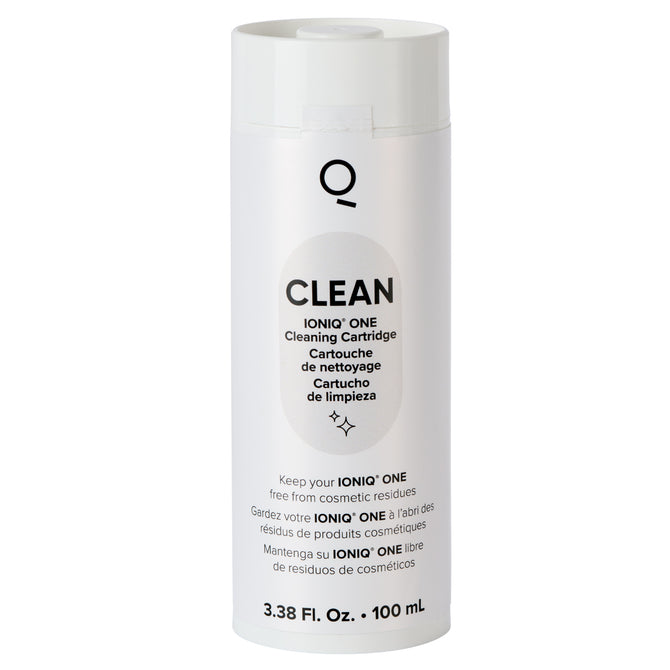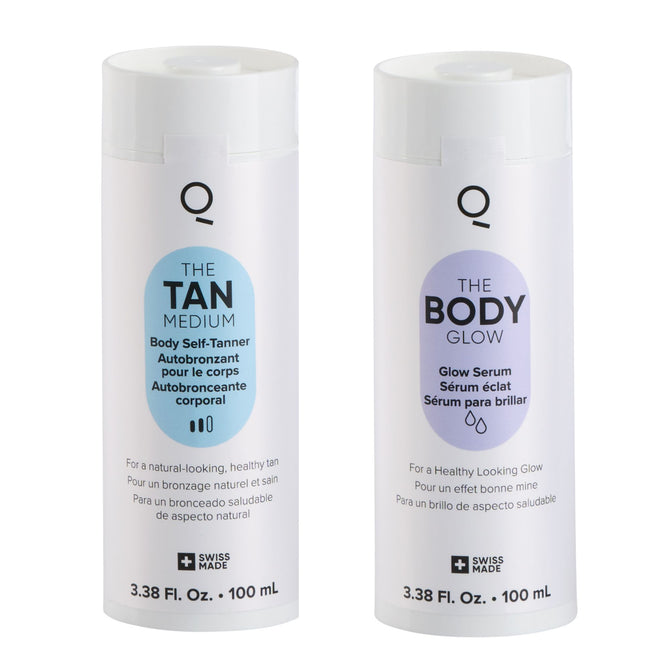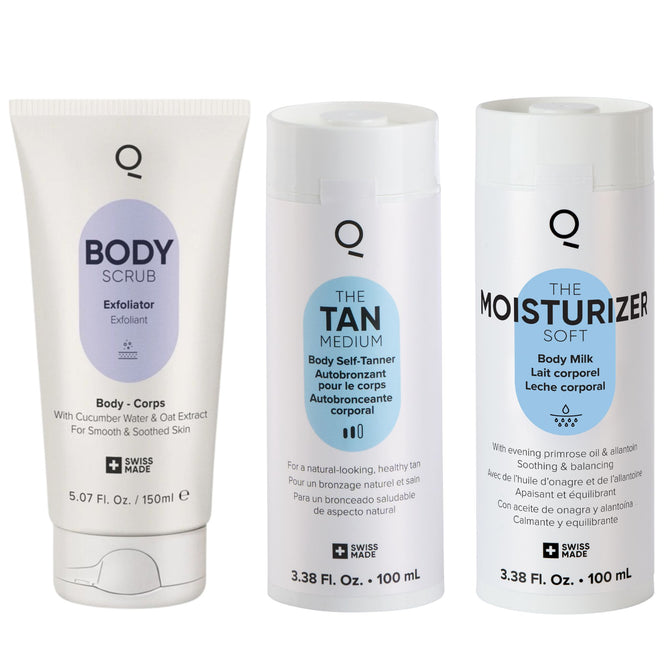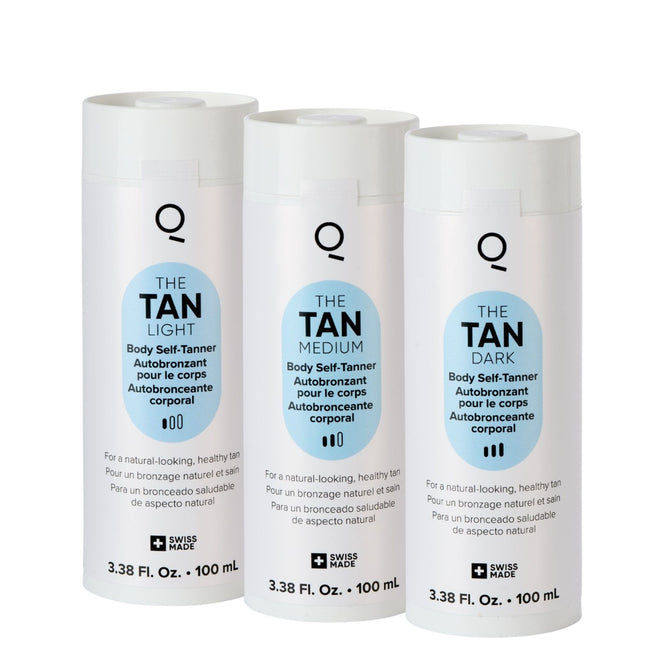
There’s a reason this topic keeps coming up. Most people want to get the perfect tan - something natural, even, and long-lasting - but they’re unsure how long to leave self tanner on to make that happen. And it's not their fault. Directions on bottles vary. Different products behave differently. Some formulas tell you to wait two hours, others tell you to sleep in it, and then there are those that don’t give you clear guidance at all.
But if you’ve ever ended up patchy, orange, or just disappointed, chances are the mistake started with time. Whether you washed off too soon, left it on too long, or didn’t understand what the product needed to develop properly, that gap in timing can ruin an otherwise great application.
So how long should you leave self tanner on? The honest answer is: it depends on the type of product, your skin, and your goals. But once you understand how timing works in self tanning - and why it matters more than most people think - you’ll never have to guess again.
This isn’t just about avoiding a bad tan. It’s about taking control of the process and getting results that feel good, look good, and last longer.
<!-- split -->
Why Timing Matters More Than You Think
Some people think self tanner is like makeup - just apply it and go. Others assume that the longer it sits on your skin, the darker the tan. But neither of these ideas are accurate. Understanding how long to leave self tanner on is about more than color depth. It’s about how your skin reacts, absorbs, and maintains the pigment in a way that keeps your glow even and healthy.
Let’s look at why time is such a big deal in self tanning.
1. Application time directly affects how your tan develops
Every self tanner has a window for development. Most begin working within the first 30 to 60 minutes, but the full process can take anywhere from 4 to 8 hours - or more. If you rinse too early, the tanning action may not be complete, which means you’ll end up with a lighter or uneven result. If you leave it on too long, especially with low-quality or heavy formulas, it can get patchy, overdeveloped, or dry out your skin.
2. Too much product exposure can lead to buildup and skin stress
The longer a product sits on your skin, the more chance it has to block pores or sit in dry patches. This is especially true with mousses and lotions that are designed for thick layering. If you leave those types on longer than recommended, you increase the chances of dark splotches on knees, elbows, ankles, and hands - the places where self tanner tends to collect.
3. Leaving tanner on overnight isn’t always better
Some people assume the best way to tan is to apply at night and sleep in it. That can work with certain formulas, but for others, it’s a recipe for ruined sheets, uneven color, or irritated skin. Not all tanners are meant for long exposure. Many formulas develop fully within a few hours. After that, leaving them on longer offers no benefit - and sometimes leads to bad fade-outs.
4. Proper timing = better fade
How long you leave self tanner on also affects how it wears off. When the product has enough time to fully develop and settle into the top layer of your skin, it fades naturally and evenly over time. But if the application is rushed or the formula over-develops, it tends to fade in patches, forcing you to exfoliate and start again.
5. Your timing should match your lifestyle
Let’s say you’re tanning for a weekend trip. You need to plan around when to apply and when to rinse. You don’t want to shower too early and ruin your tan, but you also don’t want to be sticky or worried about your clothes. Getting the timing right means you can confidently apply, go about your day, and wash off at the right time without stress.
Timing isn’t just a technical detail. It’s the difference between a tan that works for your life and one that interrupts it.
<!-- split -->
What Happens If You Leave Self Tanner On Too Long?
Let’s break this down. Leaving a tanner on longer than directed doesn’t always mean your tan will be darker. It usually means:
-
the formula stays sticky and uncomfortable
-
it clings to dry patches and creases
-
it may stain clothing, bedding, or towels
-
your skin can become irritated or dry
-
the result ends up blotchy or uneven
For example, leaving a heavy mousse on for 12 hours when it was designed to be rinsed after 4 can easily result in over-saturation - especially on areas like elbows, knees, ankles, and underarms. The tan may look too dark in those zones and noticeably lighter elsewhere.
Also, many people don’t realize that after a certain point, the formula isn’t continuing to develop. It’s just sitting on your skin. Once your skin absorbs what it needs, any extra time just increases the chance of buildup.
The key is balance. Give the product enough time to do its job - but not so much time that it turns into a mess.
<!-- split -->
What Happens If You Rinse Too Early?
On the flip side, washing off self tanner before it’s fully developed can lead to a totally different problem - barely-there results. You go through all the effort of exfoliating, applying, waiting.. and then step out of the shower looking like nothing happened.
Rinsing too soon means the pigment hasn’t had time to settle into the top layer of your skin. The color either doesn’t develop at all or fades almost immediately.
If you’re in a rush and need to apply self tanner before heading out, it’s better to choose a product with a quick development window than to try rushing a traditional formula.
Why Most People Get the Timing Wrong
The truth is, most people who get patchy or inconsistent results don’t realize it’s a timing issue. They assume it was their prep, their technique, or even their skin type. But often, it’s just that they washed too early - or waited too long.
This happens because:
-
product directions are vague or inconsistent
-
people apply at the wrong time of day and can’t follow through
-
they don’t know their skin type or how it holds color
-
they’re using outdated formulas that don’t match their needs
Once you understand how long to leave self tanner on based on what you’re using and how your skin reacts, the results become way more predictable.
When Timing Feels Confusing, Use a Smarter Approach
The best way to take control of timing is to understand what you’re working with. Some newer self tanners are designed to develop in a set window - no guesswork needed. Some even offer visible markers or guide colors that help you know when to rinse.
Even better, there are solutions that remove the timing stress altogether - formulas that absorb fast, go on clean, and develop into an even, natural glow without needing to stay on your skin for 10+ hours.
But more on that later.
For now, the takeaway is simple: how long to leave self tanner on matters. It impacts everything from your color payoff to how long your glow lasts to how confident you feel wearing it.
Get it right, and your tan becomes effortless. Get it wrong, and you’re back to square one.
<!-- split -->
How Long to Leave Different Types of Self Tanners On
If you’ve ever asked yourself how long to leave self tanner on, the first thing you need to know is this: not all self tanners follow the same rules. Different products use different formulas, work on different timelines, and require very specific handling. What works for a mousse might completely fail with a lotion. A spray might dry fast, but that doesn’t mean it’s ready to rinse. And overnight tanners? They come with their own set of trade-offs.
So if you’re guessing how long to leave self tanner on based on something you saw on social media or heard from a friend, you’re playing a risky game. What works for one product often doesn’t apply to another.
This section is about breaking down the major types of self tanners and explaining how long each one typically needs to stay on your skin in order to deliver solid, even, natural-looking results. We'll also look at the issues that come with each type - because knowing how long to leave self tanner on also means knowing when it’s safe to rinse and when it’s time to let it keep developing.
Traditional Lotions, Mousses, and Sprays
Let’s start with the most common types of self tanners: lotions, mousses, and spray formulas that come in cans or pump bottles. These are often the first products people try when they get into self tanning at home. They’re affordable, easy to find, and fairly simple to apply - but when it comes to timing, they’re not as straightforward as they seem.
How long to leave lotion self tanner on
Traditional self tanning lotions are usually designed to stay on the skin between 6 and 8 hours before rinsing. Some formulas suggest overnight use, while others are labeled for shorter wear. But generally, a full 6 to 8-hour window allows the product to develop properly.
The problem is that lotions can be sticky, slow to dry, and sometimes hard to gauge. They often feel like they’re still wet even hours after application, making it difficult to know when the tan has set in. That uncertainty can lead to people rinsing too early - or leaving it on too long and getting uneven results.
Watch out for:
-
streaks if not rubbed in thoroughly
-
patchy development in dry areas
-
difficulty rinsing off completely
How long to leave mousse self tanner on
Mousse formulas are typically faster-drying than lotions. Many mousses recommend 4 to 6 hours of development time, though some ultra-dark versions push that to 8 hours or more. They’re popular for the foam texture and faster absorption, but they come with challenges of their own.
If you’re using a mousse and rinse too early - say, after only 2 hours - you’ll likely end up with a pale or patchy tan. On the other hand, leaving it on too long can result in an overly dark or orange result, depending on the formulation.
Key signs it’s time to rinse:
-
the mousse has dried fully on the skin
-
the guide color (if present) is stable and no longer transferring
-
the recommended time listed on the product has passed
Common problems with mousses:
-
build-up in knuckles, knees, and elbows
-
stains on clothing and bedding if left overnight
-
visible wear-off after only a few days
How long to leave aerosol-style self tanning sprays on
Sprays from cans or pump bottles typically need 6 to 8 hours to develop. Many of them go on with a fine mist and don’t require rubbing in, which makes them a little cleaner in application. However, they can dry unevenly if sprayed too close or too far, and the color payoff can be inconsistent depending on how heavily you apply them.
People often think these spray tanners dry faster, and they do feel dry quicker - but that doesn’t mean the tanning process is done. If you rinse after only 2–3 hours, you may wash away much of the product before the full effect kicks in.
Watch out for:
-
difficulty reaching your back and sides evenly
-
color settling unevenly if skin isn’t prepped right
-
waste due to overspray and air loss
Overall, with traditional tanners - whether lotion, mousse, or spray - the common theme is this: you’re expected to wait, often for 6 to 8 hours, and deal with mess, transfer, and potential discomfort in the meantime.
That’s why people look for alternatives. Because knowing how long to leave self tanner on is only part of the equation - the other part is how much effort it takes to get through that wait time without ruining your results.
Overnight Tanning Products - Are They Really Better?
Many self tanning products today are labeled as “overnight tanners.” These are marketed to be applied before bed, left on overnight, and rinsed in the morning. At first glance, this seems convenient - you sleep while your tan develops. But there are several factors to consider.
How long to leave overnight self tanner on
These are typically designed for 8–10 hours of wear. That means you apply, go to bed, and rinse in the morning - ideally with minimal movement, sweating, or friction.
But the reality isn’t always so simple. Overnight tanners can:
-
stain sheets and pillowcases
-
become blotchy if you sweat during the night
-
rub off on pajamas or your arms and legs
-
cause skin dryness or irritation after prolonged contact
While some people swear by them, others wake up to find the tan has gone uneven or that their skin feels dry and coated. If your skin is sensitive, the long contact time might actually work against you.
Are they really better? Not necessarily. Overnight tanners are just traditional products with a longer suggested contact time. Leaving them on longer doesn't always lead to a deeper tan. In fact, over-developing can lead to:
-
unnatural color tones
-
faster, uneven fade-out
-
increased residue buildup
So when you’re deciding how long to leave self tanner on, don’t assume that longer means better. It depends entirely on the product’s chemistry and your skin’s response to it.
<!-- split -->
What Affects How Long You Should Leave a Tanner On?
Understanding how long to leave self tanner on isn’t just about reading the label. Two people can use the same product, follow the same directions, and still get very different results. That’s because self tanning isn’t a one-size-fits-all process. Your skin plays a big role in how the color develops, how long it lasts, and how long the product should stay on before rinsing.
This section breaks down the skin-related factors that influence how long to leave self tanner on - and how to adjust your approach for a better, longer-lasting color. If you’ve ever felt like your tan fades too fast or doesn’t show up the way it should, these might be the reasons why.
Your Skin Type, Tone, and Texture
The surface of your skin affects how well self tanner can absorb and develop. Understanding your skin type and condition helps you time your application more effectively and avoid common issues like blotching, fading, or uneven color payoff.
Dry Skin Absorbs More - but Can Over-Absorb
If you have dry or flaky skin, you might notice that self tanner develops darker or more intensely on certain areas. That’s because dry skin creates tiny rough patches that hold onto more product. While this might sound like a good thing, it often leads to uneven development.
Common signs of over-absorption:
-
elbows and knees turn noticeably darker than the rest of your body
-
flaky areas develop patchy tan
-
the tan looks blotchy as it fades
For dry skin, it’s important to exfoliate before application and moisturize lightly before tanning - especially on dry-prone areas. When it comes to how long to leave self tanner on with dry skin, you should aim to stay within the recommended window. Leaving the product on longer won’t fix dryness; it will usually exaggerate it.
Oily Skin May Resist Color
Oily or combination skin may not hold onto self tanner as well. The excess oil on the surface can create a barrier that prevents the product from fully absorbing. In this case, leaving the tanner on for the full recommended time - or slightly longer, if the formula allows - can help ensure better results.
Still, be cautious. Over-extending wear time won’t guarantee better results if the product can’t penetrate the skin in the first place. For oily skin types:
-
cleanse thoroughly before applying
-
avoid heavy moisturizers before tanning
-
consider a quick rinse instead of a full shower if your tan needs a slight boost after development
Sensitive Skin and Long Contact Times
If you have sensitive skin, how long you leave self tanner on becomes even more important. Prolonged exposure to certain ingredients - even if they seem mild - can cause redness, itchiness, or discomfort.
Watch for:
-
tingling or burning while the tanner is on
-
sensitivity after rinsing, especially around the face or neck
-
uneven fade due to post-application dryness
Stick to the shorter end of the recommended time range, especially with first-time use.
Skin Tone Affects How Color Appears
Your natural skin tone doesn’t just impact the color result - it also influences how long you should leave self tanner on for that result to show up evenly.
Fair skin may develop color more quickly and show unevenness faster. Leaving a dark formula on for too long can make the tan look unnatural.
Darker skin tones may need the full development time or a slightly deeper product to achieve noticeable enhancement. But that doesn’t mean you should overextend the wear time. A better approach is layering over time instead of leaving the product on far longer than intended.
Exfoliation, Prep, and Skin Barrier Health
Skin prep plays a big role in how long to leave self tanner on. If your skin isn’t prepped correctly, the product might not develop evenly - or at all.
Exfoliating beforehand removes dead skin cells that could block absorption or create uneven spots. When you skip exfoliation:
-
product builds up in certain areas
-
tan fades quickly and unevenly
-
color doesn’t show up as expected
Moisturizing the right way also matters. You don’t want to tan over greasy lotion, but completely dry skin isn’t ideal either. Aim for balanced skin with light hydration, especially on elbows, knees, ankles, and feet.
A healthy skin barrier helps self tanner develop smoothly. If your skin is damaged, inflamed, or overly dry, it can either absorb the product too quickly or resist it entirely - both of which affect how long the product should stay on.
Climate and Environmental Conditions
Even your environment can influence how long to leave self tanner on. Here’s how:
Humidity: High humidity may prevent the product from drying fully. That can lead to streaks or smudging if the product shifts on your skin before development is complete. In these cases, avoid leaving it on for extra time hoping for deeper color - it’s better to control the application.
Heat and sweating: If you apply self tanner and then get warm - whether from exercise, sleep, or hot weather - sweat can interfere with how the product sets. That can lead to uneven results or fading before the color fully develops.
Cold, dry weather: This can make your skin more prone to dryness and uneven absorption. Stick to the lower end of the timing range and moisturize afterward to help the tan last longer.
Timing Isn’t About Guesswork - It’s About Skin Awareness
The big takeaway here is that timing should always be customized. The product label gives you a starting point, but your skin tells the rest of the story.
You should never pick a number at random. Instead, factor in:
-
your skin type (dry, oily, balanced, or sensitive)
-
how well your skin was prepped
-
the environment you’ll be in while the tanner develops
-
how your skin normally responds to color development
Once you know those details, you’ll know how long to leave self tanner on for results that look right, last longer, and don’t create drama along the way.
How the IONIQ ONE Sprayer + TAN Changes Everything
If you’ve been through the trial-and-error of self tanning, you already know that one of the hardest parts is figuring out how long to leave self tanner on. The wrong timing leads to bad results - whether it's a streaky finish, orange elbows, or a tan that barely lasts a day.
Traditional mousses, sprays, and lotions often make timing feel like a guessing game. Apply too little and rinse too early? You’re pale by morning. Leave it on too long? You’re overdeveloped, sticky, and stained. Even worse, some formulas develop unevenly no matter what you do.
We designed the IONIQ ONE Sprayer + TAN, the best at-home spray to fix all of that. It’s not just a better way to tan - it’s a smarter way that eliminates the need for perfect timing. The device’s technology and the formula work together to simplify your routine, giving you reliable, streak-free color that lasts without relying on an 8-hour waiting game.
Let’s break down how.
Better Absorption Means Less Waiting, Better Results
When people ask how long to leave self tanner on, what they’re really asking is: when can I rinse, move on, or go out without ruining it? With most products, the answer is: wait… and hope for the best.
We took a different approach.
The IONIQ ONE Sprayer, an at-home spray tan uses Magnetic Skin Technology to deliver tanning mist evenly and efficiently across your entire body. This magnetic mist is drawn directly to your skin, wrapping it in a smooth, even layer of product - no rubbing, no over-application, no missed patches. The result? Better coverage in less time.
Because the mist lands where it’s supposed to and doesn’t sit on the surface, the formula absorbs faster and more evenly than traditional creams or mousses. That means:
-
no need for rubbing the product into your skin
-
less risk of over-applying in dry areas like knees or elbows
-
faster absorption into the top layer of skin, where the tan develops
Most users see their full, natural-looking tan in 6 to 8 hours - but without the stickiness or long wear time that traditional products demand. The color settles in naturally, fades evenly, and stays consistent for up to 7 to 9 days.
You’re not stuck timing your rinse or guessing how long to leave self tanner on - you’re free to move forward with your day, knowing the formula is working with your skin instead of sitting on top of it.
No Hands, No Rubbing, No Pressure
One of the biggest causes of uneven color is the way traditional self tanners are applied. Whether it’s a mitt, sponge, or bare hands, you’re relying on pressure to spread product across your skin. That often leads to:
-
too much product in some areas
-
dry patches soaking up more than needed
-
lines, streaks, or blotchy coverage from rubbing
And when it comes to how long to leave self tanner on, those inconsistencies make it harder to know when to rinse. A thin layer might be ready sooner, while thicker spots need more time. So you either wash too early and lose half your tan - or you leave it on too long and end up with color buildup.
The IONIQ ONE Sprayer, the best at-home spray tan solves this by removing your hands from the process entirely.
The device distributes a fine, touchless mist that wraps around your body. No rubbing, no pressure, no second-guessing. It even gets those hard-to-reach places - your back, shoulders, sides, and ankles - with full 360° usability. You get the same level of coverage in 3 minutes that would normally take 20+ minutes and multiple rounds with a mitt.
And since you’re not overworking your skin with friction, you avoid irritation and breakouts, too. It’s faster, cleaner, and healthier for your skin - all while producing more consistent results.
Smart Formula That Works on Your Schedule
Let’s talk about the formula itself.
The TAN formula inside the IONIQ ONE Sprayer is designed to develop gradually and evenly without needing to sit on your skin for 8–10 hours. You don’t need to leave it overnight, you don’t need to wear baggy clothes all day, and you don’t need to hide from furniture or light-colored fabrics.
It’s mess-free, colorless on application, and doesn’t transfer onto clothes, towels, or sheets. That alone removes a huge reason people feel stuck trying to figure out how long to leave self tanner on - because there’s no downside to wearing it for a normal part of your day.
Once applied, the tan begins developing immediately and reaches full effect in about 6 to 8 hours. There’s no need to “time the rinse” like you would with traditional products. Just spray, wait for it to dry (which takes seconds), and go about your routine. Shower later - when it makes sense for you.
That kind of flexibility makes self tanning feel effortless instead of restrictive. It becomes a part of your routine, not something that controls it.
No Sticky Waiting Period, No Stains
Anyone who’s used a mousse or lotion knows the drill: apply the product, then stand around for half an hour trying not to touch anything. Your skin feels sticky, your clothes don’t fit right, and everything you sit on might end up stained.
That waiting period isn’t just annoying - it makes people avoid self tanning altogether. It turns a 5-minute process into a half-day ordeal.
The IONIQ ONE Sprayer changes that. Our formula absorbs quickly and leaves no sticky residue. You can get dressed within minutes of applying. No need for oversized T-shirts, dark towels, or worrying about transfer.
And because the formula is colorless and designed to blend seamlessly with your natural skin tone, you won’t wake up to splotches, stripes, or surprise stains on your sheets.
That’s what real convenience looks like. It’s what makes you actually want to tan regularly - because it doesn’t interrupt your life.
Built-In Consistency Means You Don’t Have to Overthink It
A huge part of timing stress comes from inconsistency. With traditional self tanners, you don’t always get the same results - even when you follow the instructions exactly. Some days the color’s great, other times it’s off. That uncertainty leads to people leaving product on longer than necessary, hoping for better payoff.
But more time doesn’t equal better results - it often causes buildup and blotching.
We built the IONIQ ONE Sprayer + TAN system to deliver the same even tan every time. The mist application is measured, efficient, and precise. You don’t need to layer or over-apply. You don’t need to adjust your rinse time from day to day.
That takes the pressure off and makes your tanning routine repeatable.
Less Guesswork. More Glow.
If you’ve ever had to plan your whole evening around how long to leave self tanner on - or skipped tanning altogether because it felt like too much work - you’re not alone. Most products make you feel like you're managing a fragile science experiment, not enhancing your skincare routine.
That’s why we re-engineered the entire experience.
The IONIQ ONE Sprayer + TAN, an at-home spray tan system makes your glow easy, fast, and repeatable. You get:
-
a fast-absorbing, aloe-infused formula that’s gentle on your skin
-
clean, mess-free application with no sticky feel
-
even development within 6–8 hours
-
long-lasting color that fades naturally over 7 to 9 days
No more worrying about exact minutes or ruining your tan with one wrong move. Just consistent results, on your terms.
Final Take: So, How Long Should You Leave a Self Tanner On?
After all the instructions, warnings, and variables, most people are still searching for one thing: a clear answer to how long to leave self tanner on. They want to glow without the trial and error, the guesswork, or the patchy aftermath. And the good news is, once you understand the core factors, that answer becomes a lot simpler.
This section brings together everything you need to know - from what to look for in a product, to how your skin plays a role, to why choosing a smarter system can take the stress out of self tanning entirely.
Watch Your Skin, and Use Smarter Tools
There is no universal number that tells everyone exactly how long to leave self tanner on. That’s because self tanning is a blend of product performance and personal skin factors. But there is a clear formula for success:
-
Start with your product type.
Different formulas require different development times. Mousses and lotions usually need 6 to 8 hours. Sprays and overnight tanners can range from 4 to 10 hours, depending on intensity and ingredients. -
Factor in your skin type and tone.
Dry skin may absorb more and develop faster in some areas - but can also go patchy if left too long. Oily skin may take longer to develop noticeable color. Fair skin may need less time to avoid overdevelopment, while deeper tones may benefit from a full wear time to get a visible result. -
Pay attention to your environment.
Humid air, heat, sweating, or contact with clothing can all disrupt the development process. Plan your application around these factors so that your tan has time to settle. -
Let the product - not just the clock - guide you.
Look for signs the tan is fully set. If your product has a guide color, wait until it’s stable and dry. If it’s clear, wait at least the minimum time listed, but don’t feel you need to extend beyond the range unless you’re confident it’s helping. -
If you’re still unsure - use a smarter solution.
The more variables you remove, the easier it becomes to nail your timing. That’s where a system like the IONIQ ONE Sprayer + TAN makes all the difference.
With wrap-around mist technology, no-rub application, and a fast-absorbing, colorless formula, the IONIQ system removes the common causes of streaks, blotches, and color failures. You don’t have to wonder how long to leave self tanner on - you just spray, go, and rinse on your own schedule.
The tan develops naturally over 6 to 8 hours and lasts up to 9 days without weird fade-outs or heavy reapplications. It fits into your life - not the other way around.
Skip the Mess - Glow Fast and Flawless with IONIQ ONE
Here’s the truth: most people get the timing wrong not because they’re careless - but because the products make it hard to get right. They require hours of waiting. They leave sticky residue. They stain your sheets, clothes, and confidence.
When you use a traditional self tanner, you’re left guessing:
-
Should I rinse after 6 hours or 8?
-
Will I wake up with a patchy face?
-
What happens if I sweat or sit down too soon?
-
Will my tan fade in 2 days if I don’t leave it on long enough?
That cycle of doubt is what we set out to fix.
With IONIQ ONE Sprayer + TAN, the entire experience changes:
-
Full-body tan in under 3 minutes
-
No rubbing, no mitts, no mess
-
A formula that dries fast and absorbs cleanly
-
Even coverage on every inch of your skin - including your back
-
No guesswork on how long to leave self tanner on
-
Streak-free results that develop evenly and fade naturally
You don’t need 10 hours in baggy clothes. You don’t need to sacrifice your pillowcase. And you definitely don’t need to worry whether your tan will show up - or wash off too soon.
Self tanning should feel effortless, not uncertain. It should fit into your skincare routine as easily as a moisturizer. With the IONIQ ONE Sprayer + TAN, it finally does.
The Final Word on Timing
If you’ve been stuck wondering how long to leave self tanner on, here’s what matters most:
-
There is no magic number, but there is a smart approach.
-
Let your product type, skin, and routine guide your timing.
-
Don’t leave tanner on “just in case” it might get darker - it rarely helps and often hurts.
-
Pay attention to how your skin reacts, and adjust your timing accordingly.
-
When in doubt, choose a system that removes the risk entirely.
Self tanning doesn’t have to be complicated. It doesn’t have to take hours out of your day or ruin your bedding. And it definitely doesn’t have to leave you guessing every time you apply.
If you’re tired of the mess, the waiting, and the worry, it’s time to switch to a better solution.
Because knowing how long to leave self tanner on is only half the battle. The other half is having a product that works with you - not against you.
References
- Sun & photoprotection – Journal of the American Academy of Dermatology. https://www.jaad.org/article/S0190-9622(04)03185-8/fulltext
- In search of the perfect tan: Chemical activity, biological effects, business considerations, and consumer implications of dihydroxyacetone sunless tanning products – PMC.
https://www.ncbi.nlm.nih.gov/pmc/articles/PMC10083914/
- A colorimetric comparison of sunless with natural skin tan – PMC. https://www.ncbi.nlm.nih.gov/pmc/articles/PMC7735640/
- Comparison of color development kinetics of tanning agents – ACS Omega. https://pubs.acs.org/doi/10.1021/acsomega.2c06124




